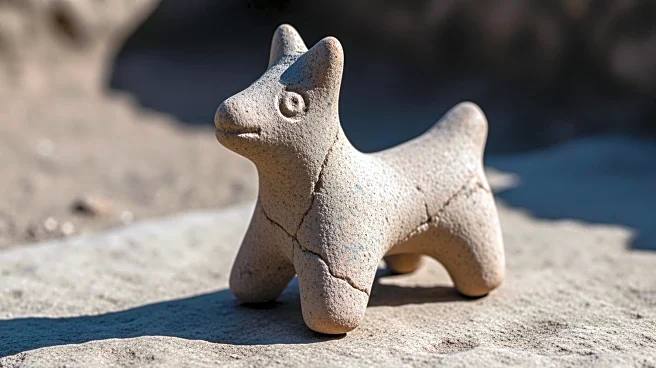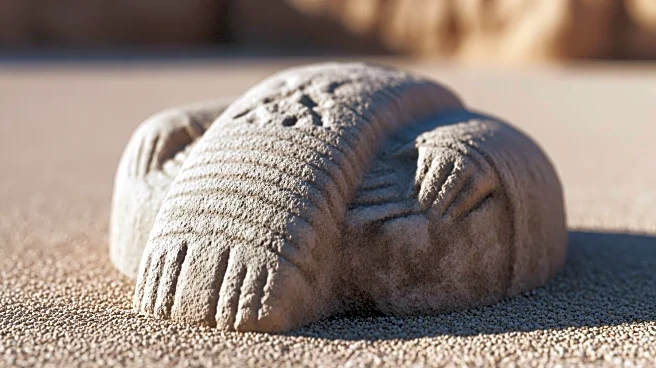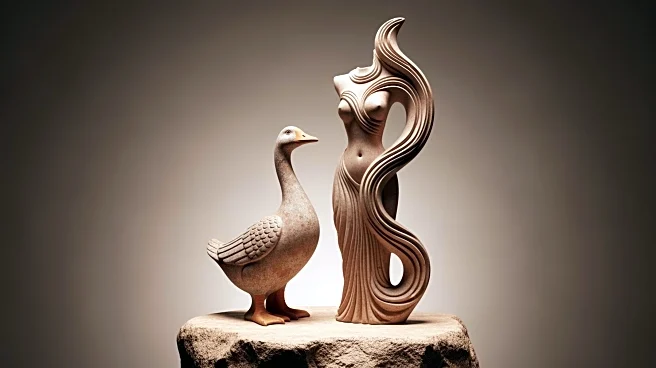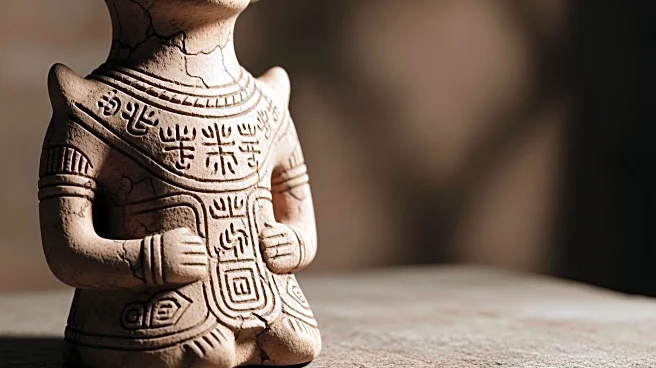What's Happening?
Archaeologists have uncovered a 12,000-year-old figurine at Nahal Ein Gev II, a Late Natufian village site in northern Israel. The figurine, made of local clay, depicts a crouching woman with a goose perched
on her back, and traces of red ocher were found on both figures. This discovery is significant as it represents the earliest known figurine depicting human-animal interaction and the earliest naturalistic representation of a woman in southwest Asia. The figurine was found in a semicircular stone structure containing burials and ceremonial deposits, suggesting it may depict a mythological or ritual scene.
Why It's Important?
The discovery of this ancient figurine provides valuable insights into the cultural and symbolic practices of the Natufian people, who lived during a transformative period when societies were transitioning from mobile hunter-gatherers to settled communities. The figurine's depiction of human-animal interaction suggests a complex understanding of the natural world and its integration into cultural narratives. Such findings contribute to our understanding of early human societies and their development of imagination and symbolic thinking, which are foundational to human culture.













